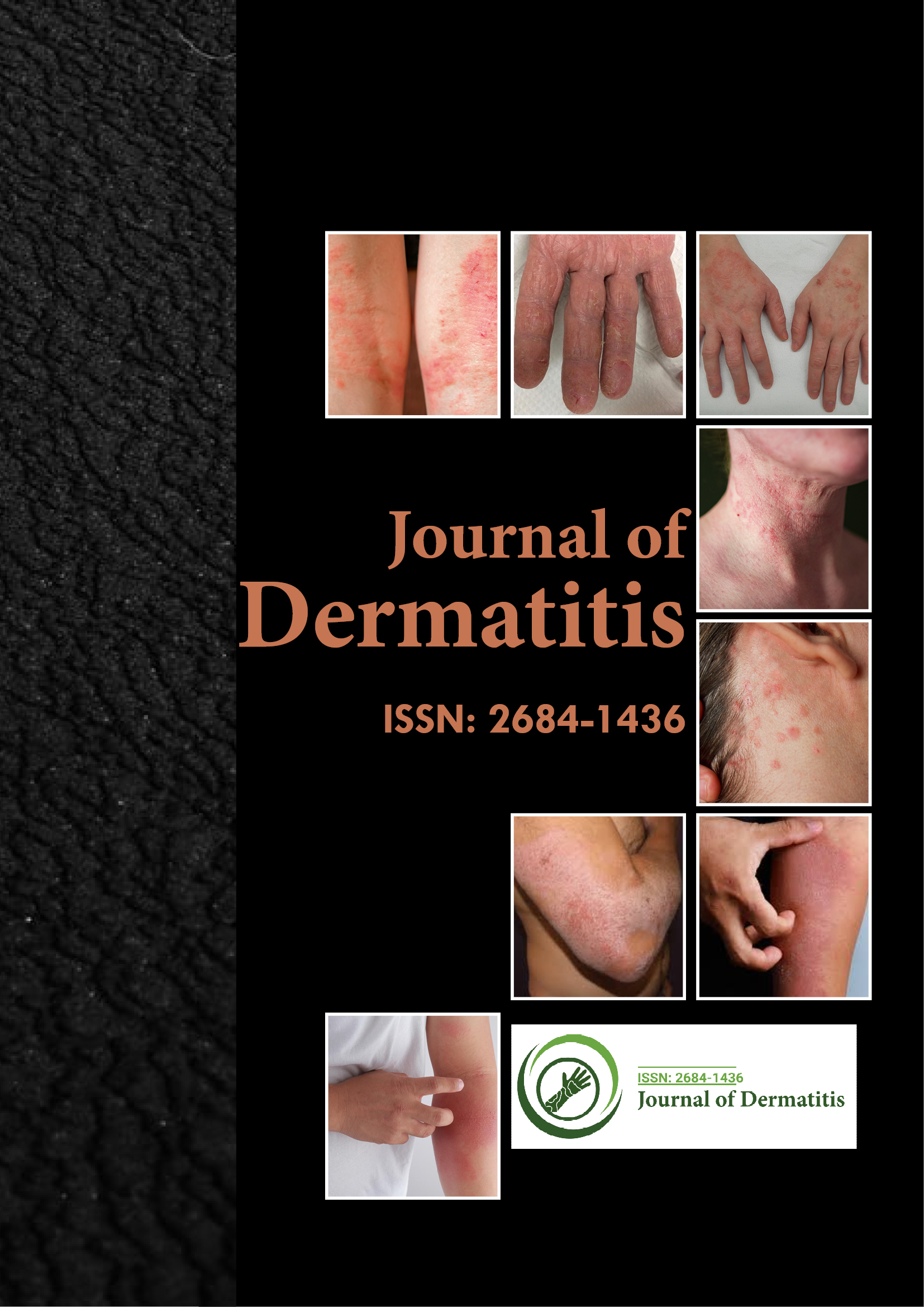ఇండెక్స్ చేయబడింది
- RefSeek
- హమ్దార్డ్ విశ్వవిద్యాలయం
- EBSCO AZ
- యూరో పబ్
- గూగుల్ స్కాలర్
ఉపయోగకరమైన లింకులు
ఈ పేజీని భాగస్వామ్యం చేయండి
జర్నల్ ఫ్లైయర్

యాక్సెస్ జర్నల్స్ తెరవండి
- ఆహారం & పోషకాహారం
- ఇంజనీరింగ్
- ఇమ్యునాలజీ & మైక్రోబయాలజీ
- క్లినికల్ సైన్సెస్
- జనరల్ సైన్స్
- జెనెటిక్స్ & మాలిక్యులర్ బయాలజీ
- నర్సింగ్ & హెల్త్ కేర్
- న్యూరోసైన్స్ & సైకాలజీ
- పర్యావరణ శాస్త్రాలు
- ఫార్మాస్యూటికల్ సైన్సెస్
- బయోఇన్ఫర్మేటిక్స్ & సిస్టమ్స్ బయాలజీ
- బయోకెమిస్ట్రీ
- మెటీరియల్స్ సైన్స్
- మెడికల్ సైన్సెస్
- రసాయన శాస్త్రం
- వెటర్నరీ సైన్సెస్
- వ్యవసాయం మరియు ఆక్వాకల్చర్
- వ్యాపార నిర్వహణ
నైరూప్య
పిల్లలలో కాంటాక్ట్ అలెర్జీ కారకాలతో స్కిన్ ప్యాచ్ పరీక్ష ఫలితాల మూల్యాంకనం-19
అజీజ్ పి మెట్బులట్, ఇల్క్నూర్ కుల్హాస్ సెలికా, ఇరెమ్ తుర్గే యగ్మురా, బెతుల్ కరాత్మకా, ముగే టోయ్రానా, ఎర్సోయ్ సివెలెకా, ఎమినే డిబెక్ మెర్లియోగ్లు
నేపధ్యం: కాంటాక్ట్ డెర్మటైటిస్ అనేది సర్వసాధారణమైన చర్మవ్యాధులలో ఒకటి. అలెర్జీ కాంటాక్ట్ డెర్మటైటిస్ (ACD) అనేది ఒక హైపర్సెన్సిటివిటీ రియాక్షన్, ఇది గతంలో అలెర్జీ కారకాలకు సున్నితంగా ఉండి, పదేపదే అలెర్జీ కారక ఎక్స్పోజర్ను కలిగి ఉన్నవారిలో సంభవిస్తుంది. కుట్లు, పచ్చబొట్లు, సమయోచిత చికిత్సలు మరియు సౌందర్య సాధనాలకు గురికావడంతో సున్నితత్వం అభివృద్ధి చెందుతుంది.
లక్ష్యాలు: పిల్లలలో కాంటాక్ట్ డెర్మటైటిస్కు కారణమయ్యే సాధారణ అలెర్జీ కారకాలను గుర్తించడం అధ్యయనం యొక్క లక్ష్యం.
పద్ధతులు: ఇది ఏప్రిల్ 2012 మరియు మే 2019 మధ్య కాంటాక్ట్ డెర్మటైటిస్తో బాధపడుతున్న మరియు పీడియాట్రిక్ అలర్జీ మరియు ఇమ్యునాలజీ క్లినిక్కి దరఖాస్తు చేసుకున్న 5 నెలల -18 సంవత్సరాల మధ్య వయస్సు గల పిల్లల యొక్క పునరాలోచన సమీక్ష. రోగులందరూ TRUE (థిన్-లేయర్ రాపిడ్ ఎపిక్యుటేనియస్) పరీక్షతో పరీక్షించబడ్డారు.
ఫలితాలు: 111 మంది బాలురు (47.4%) సహా మొత్తం 234 మంది పిల్లలు మూల్యాంకనం చేయబడ్డారు. తొంభై ఎనిమిది మంది రోగులు (41.8%) సానుకూల ఫలితాలను కలిగి ఉన్నారు. అనుకూలత పరంగా వయస్సు సమూహాలు, లింగం మరియు అలెర్జీ వ్యాధిని కలిగి ఉండటం మధ్య గణనీయమైన తేడా లేదు. నికెల్ సల్ఫేట్ (n:30[30.6%]), Cl+Me-ఐసోథియాజోలినోన్ (n: 15[15.3%]) మరియు థైమెరోసల్ (n:14[14.2%]) చాలా తరచుగా నిర్ణయించబడిన అలెర్జీ కారకాలు.
తీర్మానాలు: కాంటాక్ట్ డెర్మటైటిస్ ఉన్న రోగులలో నికెల్ అత్యంత సాధారణ కాంటాక్ట్ అలెర్జీ కారకం.